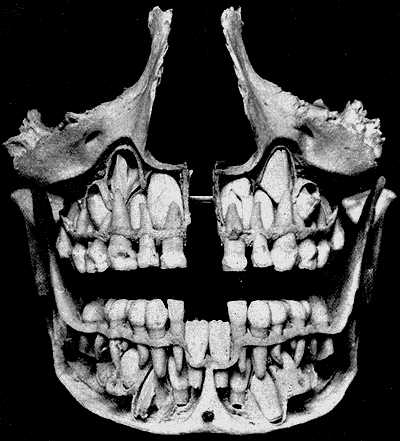Forensics 101: Determining Age at Death Using Dentition
/ When it comes to unknown victim identification, there are three main pieces of information a forensic anthropologist can contribute to an investigation—sex, race, and age at the time of death. In some cases, time since death can also assist in narrowing victim identification based upon reports of the last time the victim was seen alive. Previously, we’ve covered various ways to determine the victim’s age at the time of death based on epiphyseal fusion or the adult pelvis, but several other methods exist and are also in use. One of the least sexy—but most useful—ways to determine age at the time of death is to use the victim’s teeth.
When it comes to unknown victim identification, there are three main pieces of information a forensic anthropologist can contribute to an investigation—sex, race, and age at the time of death. In some cases, time since death can also assist in narrowing victim identification based upon reports of the last time the victim was seen alive. Previously, we’ve covered various ways to determine the victim’s age at the time of death based on epiphyseal fusion or the adult pelvis, but several other methods exist and are also in use. One of the least sexy—but most useful—ways to determine age at the time of death is to use the victim’s teeth.
This method relies on the fact that, throughout childhood, baby teeth are lost and new teeth erupt according to fairly predictable developmental time points. Even more so than epiphyseal fusion, tooth loss and gain holds to a more rigorous chronological schedule.
There are four notable time periods of tooth development in growing children:
- Deciduous baby teeth emerge during the first two years of life.
- The first two permanent incisors and the first permanent molar emerge between 6 and 8 years of age.
- The majority of the remaining permanent teeth erupt between the ages of 10 and 12 years of age.
- Wisdom teeth tend to erupt around 18 years of age.
In addition, the development of permanent teeth within the skull before eruption occurs can help indicate age. This can be clearly seen in x-rays taken by a coroner or medical examiner.

Using dentition to age adults is a more challenging practice. Once the wisdom teeth have erupted, only morphological changes within the teeth indicate age differences. These changes can include:
- Tooth root translucency increases with age, independent of periodontal damage.
- Dental wear on the teeth; this tends to be a predictable variable within populations.
- Ratio of the amino acids D-aspartic acid to L-aspartic acid in tooth dentin. The L form of any amino acid is the mirrored structural image of the D form. Amino acids begin in the L form and convert with age to the D form, so a preponderance of the D form indicates increasing age.
Especially in children, the use of dentition can be very helpful in victim identification by minimizing the estimated age range. Used in conjunction with other methods, such as epiphyseal fusion, forensic anthropologists can be quite exact in providing age related information to investigators.
It’s giveaway time! I’m giving away a signed ARC of A FLAME IN THE WIND OF DEATH, so be sure to enter for your chance to win!
And watch Goodreads starting on Friday for another chance at a giveaway here! (Please note, this link won’t be active until Friday, but I’ll remind you again next week!)
Photo credit: Wikimedia Commons (skull section) and Wikimedia Commons (developing teeth)



 COMPLETE!
COMPLETE! Planning
Planning